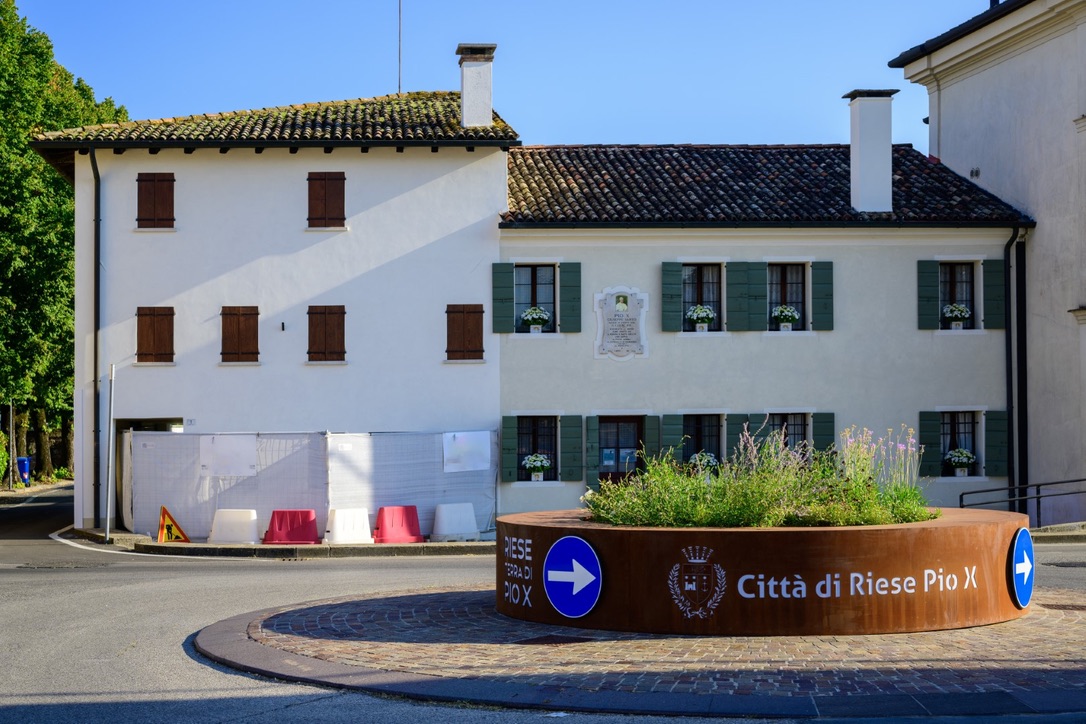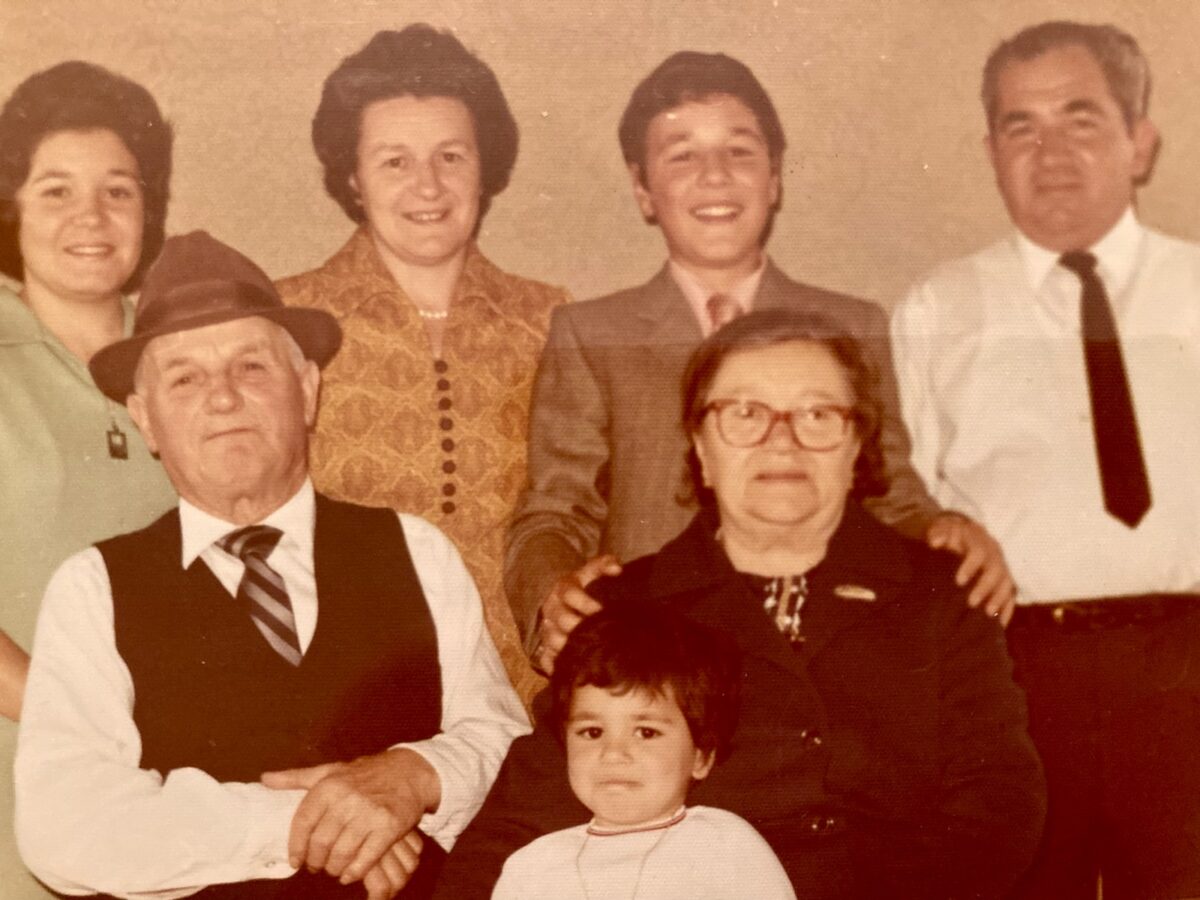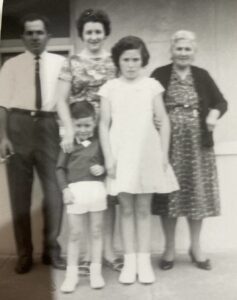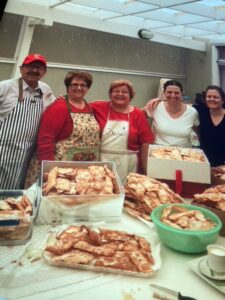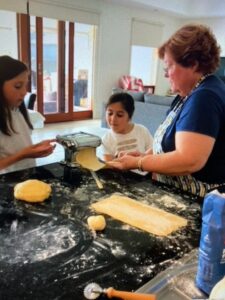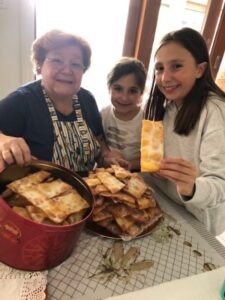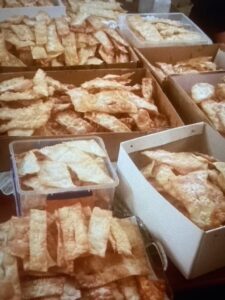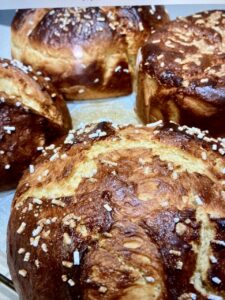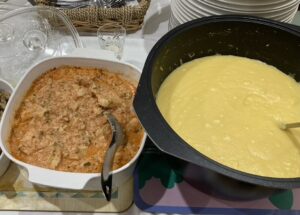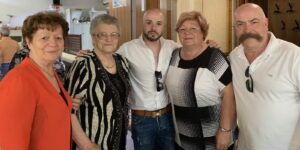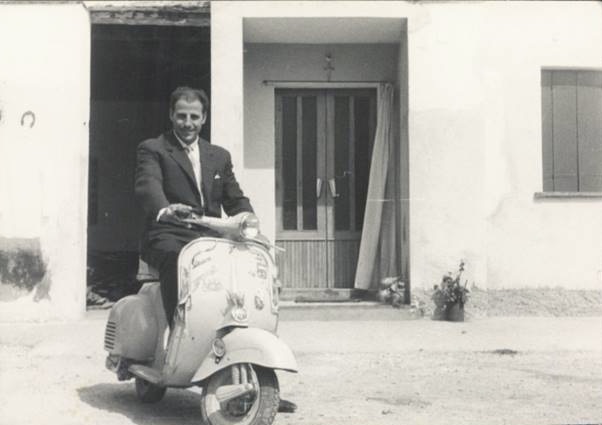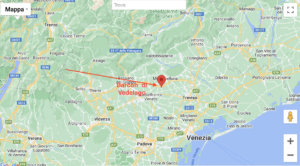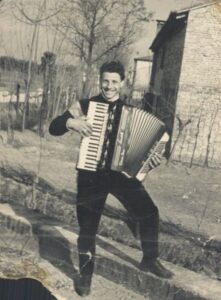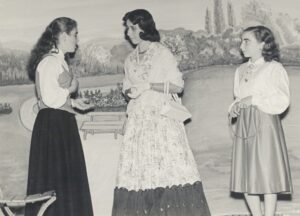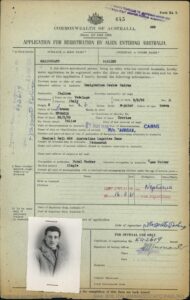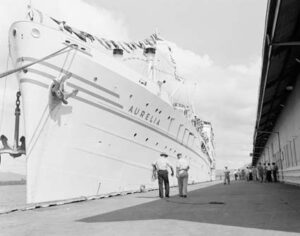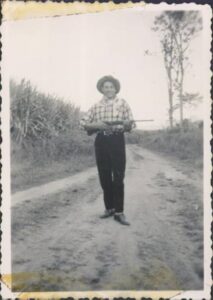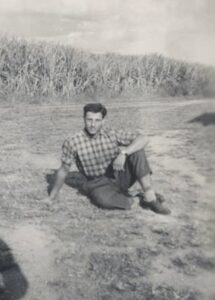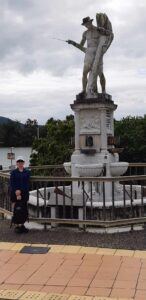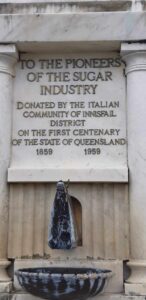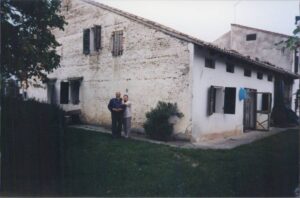Guest blogger, Remo Berno writes about the history of Saint Pius X and the important event that will take place in the saint’s birthplace next month.
In the photo above, you see the museum of St Pius X and his birthplace.
On our website , “Veneti market gardeners,” you find the names of the pioneer families that settled on market gardens in the western suburbs of Adelaide. I’d like to point out that these families that migrated to the Lockleys area, all came from a limited area of the Veneto Region in Italy. I live in the city of Riese Pio X in the Province of Treviso, the heart of Veneto, and all these families originated from small rural towns within a radius of 40 km from my home.
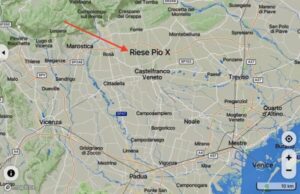
Apart from the two Marchioro families that came from Malo in the neighbouring Province of Vicenza, all the others came from towns in the Treviso Province. The Berno, Ballestrin and Zampin families migrated to Adelaide from Riese Pio X. The Santin and Tonellato families came from Caselle di Altivole which is only 5 km from Riese. The Rebuli and the Rossetto families were from Bigolino, 20 km from Riese. The Zalunardo family from Castelcucco – 20 km, and the Piovesan family originated from Ponzano Veneto – 30 km. Thus, not only did they live and create their businesses in Australia, very close to each other, in the Lockleys area, but they also originated from the same area in Italy, often neighbouring country villages. They spoke the same Venetian dialect. Their ties were very strong, and this may explain why this particular community in the Western suburbs of Adelaide came to be and how it quickly grew into something that lasted for many decades.
Historical perspective
The city of Riese dates back to the VIII century. In the year 972 there is reference to the Roman Emperor Ottone 1st , who donated the “Castrum Resii” (the Resio Castle) to the bishop of Treviso.
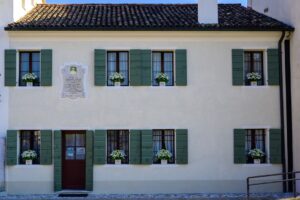
The most renowned and celebrated citizen of Riese is Giuseppe Melciore Sarto who was born in 1835. He died as Pope of the Roman Catholic Church, Pius X, in 1914. On the 29th May 1954, he was proclaimed Saint Pius X by Pope Pius XII.
It was then that the municipality of Riese associated its name to their holy citizen, thus giving its current name, Riese Pio X.
In 1985 Saint Pius X was proclaimed the patron saint of the migrant association, “Trevisani nel Mondo” (people from Treviso in the world) because of the attention and the affection that he showed towards Italian migrants, and especially Veneti. In early 20th century, the Catholic religion dominated the lives of Catholic Italy.

Especially in rural areas, the parish church was the centre of the community. The parish priest was probably the most influential person, even more important than the local mayor. Migrants that went to establish their lives and their families very far away from their home, settling in foreign nations maintained their faith. Pope Pius X was very concerned about this important phenomenon. In 1907 he established in Rome a seminary to prepare priests and religious to follow these migrants in the new worlds to maintain their Catholic Christianity. In 1914 Pope Pius X established the World Day of Migrants and on next Sunday 24th September, Pope Francis will celebrate the 110th anniversary.
Who was Saint Pius X and why was he so important?
Giuseppe Melchiore Sarto (the future Pope Pius X) was born in the small country village of Riese Pio X on June 2nd1835, the second of 11 children to Giovanni Battista Sarto and Margherita Sanson. Although not a peasant family (in fact Giovanni Sarto was employed at the local municipality) they were of humble origin. The young Giuseppe was a good student with a lively, impulsive and rigorous character. He never missed Christian doctrine and at an early age he often went to pray at the Marian sanctuary in Cendrole (2 km from his house).
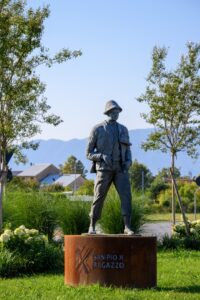
After finishing primary school in Riese Pio X, he continued his secondary school studies at Castelfranco Veneto. In those years in rural villages, most children attended school for just three years. Castelfranco Veneto is 7 km from Riese Pio X and Giuseppe Sarto would walk to school, often barefoot with his clogs on his shoulders so as not to wear them out.
He continued his studies in the Padua seminary, and received his Holy Orders in the cathedral of Castelfranco Veneto on 18th September 1858. The next day he celebrated his first Mass in the church of Riese. He was chaplain in Tombolo (province of Padua) for 9 years and in 1867 Farther Giuseppe Sarto became the Pastor of the Salzano parish (province of Venice). After 9 years, he served in the Bishopric of Treviso mainly as the bishop’s chancellor and spiritual director of the Treviso seminary. In 1885 he was proclaimed Bishop of Mantua (in the Lombardy region) where Giuseppe Sarto entered a very troubled diocese, defined as a “diocese adrift”. He was close to the poor with material help and always welcomed everyone without distinction of social class or wealth. Giuseppe Sarto’s pastoral actions were viewed very closely by the Vatican authorities with ever growing admiration. In 1893, he was elected cardinal and three days later, was promoted to Patriarch of Venice. Once again, he had to face a difficult situation because the diocese of Venice was in turmoil. As in his previous roles, Giuseppe Sarto turned matters around. He renewed the seminary, reformed studies and founded the faculty of Canon Law in 1902.
He cared for the poor in Venice and was a catechist of the young and the children.
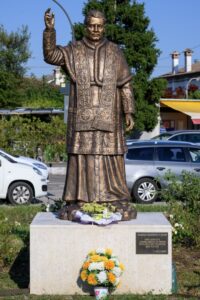
The Catholic community fell in love with this new Patriarch, to the point that when he left on 26th July 1903 to participate in the election of the successor to Pope Leo XIII, the Venetians flocked to farewell him. At the train station Giuseppe Sarto greeted his beloved faithful with the famous phrase “or dead or alive I will return”.
On 4th August 1903 Cardinal Sarto was proclaimed the new Pope and chose the name Pius. His eleven years as head of the Catholic Church was filled with distinctions. He was able to understand people because he was one of the very few popes to have progressed from a small village to hold many roles in the Church. Until then, most of his predecessors were of noble origin. Men from poor families had little education and were destined to become simple parish priests. Pius X’s humble origins enabled him to better understand the communities. He died in 1914 and in 1951 he was beatified. In 1954 Pope Pius XII proclaimed him Saint Pius X. He was the first Pope sanctified for almost 500 years.
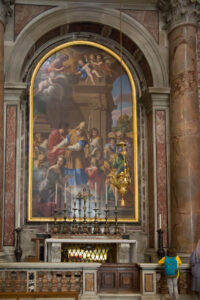
The Venetians were so impressed by this man and remembering his last words before leaving Venice for the papal conclave “or dead or alive I will return”, they started a movement that culminated in 1959 when the corpse of Pius X was transported from his grave under the Saint Peter’s Basilica in Rome, to Saint Mark’s Basilica in Venice where it was honoured for a few days.
Upon return to the Vatican City, Saint Pius X became the only Pope to be laid to rest in the Basilica and not under it. In fact, his sarcophagus can now be worshipped under his altar that is just on the left as you enter St Peter’s Basilica.
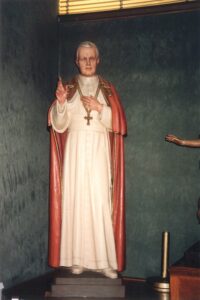
Commemoration of Pio X in Adelaide
Reaching back to the Veneti who migrated to Adelaide, I would like to link Pope Pius X to these migrants. As I pointed out before, Saint Pius X was proclaimed patron saint of the migrant association “Trevisani nel Mondo”. In Adelaide there are two statues of Saint Pius X. The first one was installed in the St Francis of Assisi Church in Newton where there was a strong post-war community of Veneto migrants.
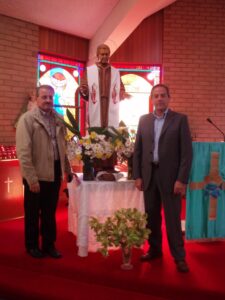
The second statue is in the Mater Christi Church on Grange Road, Seaton. The parish is entrusted to the Scalabrinian Missionary priests. I am particularly fond of this statue, because my mother Antonietta Berno Pastro organised for it be made and taken to Adelaide in 1965. During a holiday in Italy, with the assistance of the parish priest of Riese, don Giuseppe Liessi, my mother arranged to have the wooden statue sculpted by the renowned artisans in the Gardena Valley (Val Gardena) in the northern Italian province of Bolzano. The wooden statue travelled from Italy to Adelaide on the ship Galileo Galilei as part of my mother’s luggage on her return trip.
“Peregrinatio Corporis” – 6th to 15th October 2023 in Riese Pio X
The devotion to Saint Pius X is obviously still very strong in our local community of Riese Pio X, but the interest in this saint, lives on from the Vatican to the many parishes dedicated to Saint Pius X throughout the world. In Italy there are around 80 Saint Pius X parish churches, hundreds in Europe, over 80 in North America, and many others in South America, Australia, New Zealand, Africa and Japan. This year we will experience an extraordinary event. The glass case carrying Saint Pius X’s remains will travel from the Vatican to Riese Pio X as it did 64 years ago to Venice.

The event will mark the 120th anniversary of the election of Giuseppe Sarto as Pope Pius X. The Giuseppe Sarto Foundation, the Treviso Diocese, the parish and the municipality of Riese Pio X will honour our saint by means of a second “Peregrinatio Corporis”.
For the first time after becoming Pope Pius X, Giuseppe Sarto will return to his town of birth for 10 days and will be honoured in the Marian sanctuary in Cendrole. We are expecting tens of thousands of Catholics to participate in this pilgrimage. I hope to post another blog giving testimony to this once in a lifetime event.
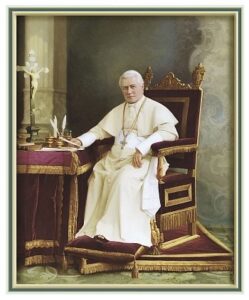
Remo Berno
24 September 2023
All images not already attributed were provided by Remo.
